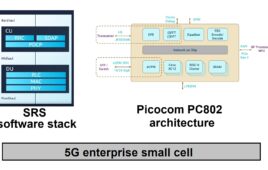Despite its decision to sit out the upcoming FCC spectrum auction, Sprint CFO Tarek Robbiati said the carrier has its sights set on the 5G future with a demanding plan to build out its small cell network and capitalize on the capacity offered by its high-frequency spectrum.
In comments delivered at an investor conference on Wednesday, Robbiati said Sprint’s network plans aren’t about building up its 4G network but instead about laying the groundwork for 5G.
“We are not building a network that is 4G, 4G is almost a thing of the past,” Robbiati said. “We are building a 5G network for the future, and 5G networks are fundamentally different to 4G networks. They are all around high capacity and the more spectrum you have the more capacity you have, the more spectrum you deploy the more you can connect customers and the more speed you can give customers across your network and that requires a fair bit of densification.”
Robbiati said the most efficient spectrum for high capacity networks is high frequency spectrum, which he said Sprint already has in its 2.5 GHz assets. The catch, he said, is that very high frequency spectrum “doesn’t propagate very far,” resulting in the necessity to compensate with densification and the installment of “a lot more sites.”
Right now, Robbiati said Sprint has about 40,000 sites, but said that figure, or even the 50,000 cell site figure boasted by the competition, is “simply not enough” for what Sprint plans to do.
“You need to think differently,” Robbiati said. “You need to have a very different way of engineering your network which is a lot more around small cells and putting a lot more spectrum on air.”
Robbiati said it is “not economical” to attempt to densify with tower sites alone and said Sprint will focus instead on small cell deployments that will cost a fraction of what would be spend on tower sites.
As a result, Robbiati said, the assumptions around the carrier’s capex to sales ration “no longer hold.” Where the ratio used to be around 20 percent, that figure will now be lower, he said.
Robbiati said the network of the future will be a heterogeneous network, meaning the shape of the network will vary by location to account for the specific needs of different coverage areas.
“There is no more a single type of site that suits every situation, even in metro and urban settings,” Robbiati said. “For the suburban environment, you’ll probably need more towers. Small cell sites won’t really do the same thing, but you don’t really need so many small cell sites in low populated areas.”
To fund the deployment of this new network, Robbiati said Sprint will raise money against a “very small portion” of its spectrum assets through Sprint’s network lease company. Robbiati said the asset-backed lending program represents a “fairly attractive” option compared to the alternatives.



